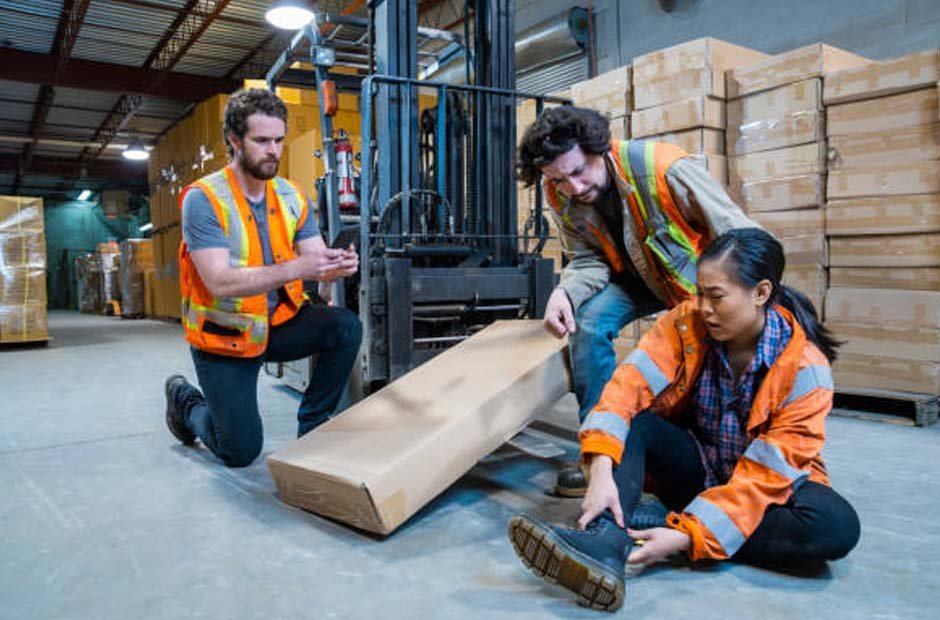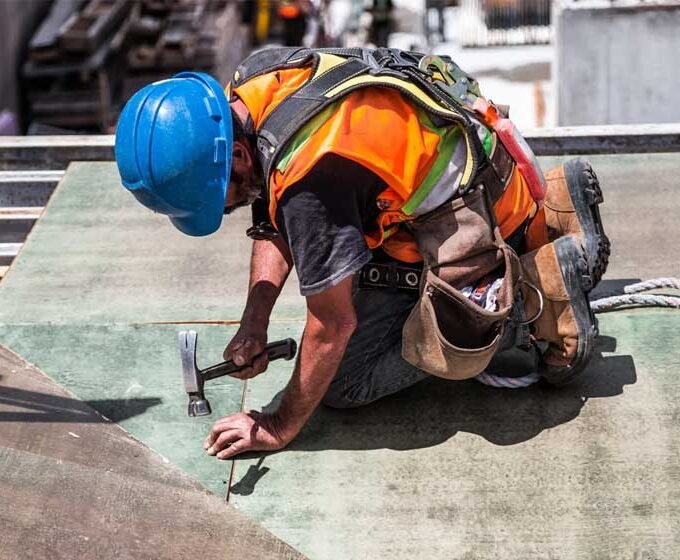Warehouses are the new business hubs – they are in demand and always busy. Especially with the eCommerce boom, not only are more and more people working at warehouses, but new technology is being introduced and implemented to make work faster and more efficient. If you look around, a typical scene at a warehouse would have forklifts moving around pallets while sorting and conveyance systems are moving boxes around at speed and then shipping them off to the right places.
Most places also have an automated storage and retrieval system and bring the goods to the workers in the packing and shipping department. Although it is highly automated and tech-based, running a warehouse has a lot of human involvement, and people play a crucial role in maintaining and handling these technologies and managing the unplanned events that crop up throughout a normal workday. This makes for a very high-risk workspace where large objects are constantly being moved, loaded, and unloaded. Using a health and safety software such as EcoOnline can help you better monitor the safety of your warehouse employees.
Warehouse injuries are not uncommon, and it is always good to know what to do to defend your rights if you or anyone you know is injured at a warehouse workplace. In fact, according to Liberty Mutual Insurance’s Workplace Safety Index for 2022, more than 2 million people are employed at warehouses, and the cost of these injuries is high. As per OSHA’s latest reports, Amazon injuries are higher than claims. Hence, now more than ever, it is essential to be aware of the risks and what steps need to be taken in case of a warehouse injury.
Here are some common warehouse injuries and risk factors to look out for:
Forklift Accidents: One of the most widely used pieces of equipment in a warehouse that does multiple jobs like lifting and carrying heavy goods. The majority of the accidents take place when the forklift overturns, which can potentially injure someone or crush them to death.
Slips and Falls: Working conditions like uneven surfaces, bad lighting, or exposed cords can be unsafe and endanger workers. Similarly, the four-foot drop between the loading dock and the ground level presents a danger to workers; oil, powder, and water spills also contribute to many serious warehouse injuries.
Hazardous Material: Hazardous chemical packs that are damaged or leaking could result in everything from fires and burns to long-term consequences like cancer or disability.
Repetitive Injuries: Workers who are at jobs that require a lot of motion over an extended period of time are more likely to sustain repetitive stress injuries. Joint pains, strained muscles, and carpal tunnel syndrome are a few examples of stress-related injuries that can take place at a warehouse workplace.
Overexertion Injuries: These are injuries that are caused by lifting, pulling, and carrying heavy objects that can overexert your muscles and cause back and neck damage or joint pains.
Impact Injury: As the name suggests, these injuries are a result of objects that collapse or fall on the workers. Forklifts are dangerous, but so are the items that are being moved around or stacked on them. These injuries frequently cause concussions, back injuries, or shoulder injuries.
Steps To Take If You Are Injured
Here are a few steps to take if you have had a work-related injury.
First, seek medical help – your health comes first, and if there is an emergency, you or a co-worker should dial 911 or get the injured person to the nearest ER. Getting help early also ensures that the incident has been recorded and will act as proof to support your worker’s compensation claim.
After having notified the supervisor and employers, the next crucial step is to seek help to protect your rights and interests as a warehouse worker. As a practice, most employers will try to settle worker’s compensation claims for the least amount of money, or they may completely reject your claim. Lookout for compensation attorneys who will fight for you and your situation and handle all your negotiations so you can rest and heal well. Before that, you will need to file a warehouse injury compensation claim, and then your attorney will take it ahead from there. They will investigate and study your case and give you advice on the best way forward.
Bottomline
Warehouse workplace injuries are more common than before and need timely and effective intervention. Keep yourself informed on the steps to take if an injury occurs at your warehouse or workplace, and seek professional help to file for your workers’ compensation claims.
















